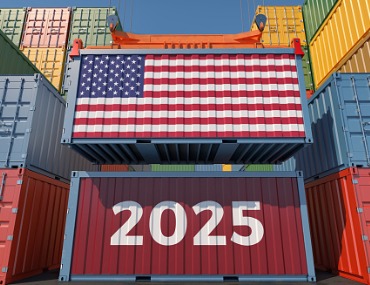

Economy
November 27, 2025
Weather Disasters and the Insurance Market in Canada: An Emerging Crisis?
Canada has had over 300 catastrophic weather events since 1983. These are currently defined as weather disasters that cause at least $30 million in insured losses, though lower thresholds were used prior to 2022. The average number of annual catastrophic events has increased over time as have insured losses associated with these events.
October 28, 2025
Is the Dial-Back of Immigration Having the Intended Impact in Canada?
Last year, policymakers acknowledged that immigration rates were too high relative to the readiness of Canada’s social and economic infrastructure. In response, the government introduced an immigration plan to right-size non-permanent residents and permanent resident targets to allow for some “catch up” in the needed infrastructure. Now the question is whether the policy shift is working to get the intended outcomes on housing and the labour markets?
October 27, 2025
No Guts, No Glory – Tax and Regulation the Silent Killer of Competitiveness in Canada
Canada’s economic competitiveness is being held back by persistent tax and regulatory barriers, which discourage business investment and stifle productivity growth. Past efforts of tax and regulation reform have failed to meaningfully reduce compliance burdens and promote economic and business dynamism. A truly competitive workforce and economy require a stronger system of infrastructure, regulation, and taxes to support growth.
October 01, 2025
Canada’s Consumer: Monetary Policy in Action
Canadian consumer spending has been remarkably robust, despite a weak first quarter of 2025. This has been primarily driven by lower interest rates that have encouraged households to spend rather than save, even as the labour market and housing sector remain subdued.
September 09, 2025
Economists’ Almanac Predicting Another Warm Year for U.S. Inflation
Higher tariffs have been slow to materialize in U.S. consumer prices. The stop-and-start rollout of trade policies, inventory stockpiling and a substitution away from highly tariffed Chinese goods have helped to mitigate the impact on goods inflation. However, these forces will play less of a role moving forward.
July 29, 2025
The Curious Case of Young Families’ Shrinking Mortgages
Statistics Canada’s Distributions of Household Economic Accounts (DHEA) contains a treasure chest of interesting facts and figures on the financial position of households. One trend that stood out for several quarters now is the steady decline in average mortgage balances of young families, even as mortgage debt has continued to rise for all other age groups.
June 26, 2025
From Border Blues to Local Boom: Canada’s 2025 Tourism Spending Outlook
Heading into peak summer travel season, many eyes will be on the performance of Canada’s tourism sector as it navigates a number of crosscurrents. On one side, visits from U.S. travelers are trending downwards amid ongoing trade tensions. On the flipside, the sector appears set to benefit from a continued rise in non-U.S. international visitors and, more importantly, solid gains in Canadian domestic travel. Predicting the overall fortunes of the sector will be determined by which of these two forces wins out.
June 24, 2025
TD Credit and Debit Card Spend Report: The Damage is Done
The latest TD Spend data suggest that Canadian consumers tightened their purse strings in the second quarter of 2025. We expect real consumer spending to be essentially flat for the quarter, with weaker momentum likely building into Q3.
April 02, 2025
U.S. Liberation Day Binds The World To High Tariffs
The U.S. administration announced broad reciprocal tariffs today, targeting all trading partners, and not just the countries that run large trade surpluses with the U.S. The tariffs will be implemented under the International Emergency Economic Powers Act (IEEPA) of 1977.
March 06, 2025
Vancouver’s Housing Foundation is Firmer than Toronto’s
Much ink has been spilled about the weak state of the GTA’s housing market, particularly its condo sector. Indeed, GTA condo prices are falling, while price trends remain soft for other structure types. In contrast, the GVA market has held up much better in the face of the Bank of Canada’s 2022/23 interest rate hiking campaign.
February 26, 2025
Capital and Repair Expenditure Survey (2025)
Statistics Canada released the results of its latest 2025 survey of non-residential capital and repair expenditures (a.k.a., the CAPEX survey). The survey was taken between September 2024 and January 2025, meaning that it misses the bulk of the more recent ramp up in tariff threats by President Trump.
February 20, 2025
The State of the Canadian Job Market and a Lookahead to an Uncertain Future
Canada’s economy is facing no shortage of risks in the months ahead, from the potential of U.S. tariffs to a population slowdown to uncertainty around the upcoming federal election. On the plus side, Canada’s labour market is starting 2025 in solid shape, providing a decent foundation to the economy as it navigates this potentially bumpy period. Indeed, for all of Canada’s economic challenges – weak economic growth, poor productivity, and deteriorating housing affordability – the job market has been serving as a pillar of economic stability.
January 28, 2025
Potential Hazards Ahead: Trade Risks in the North American Automotive Industry
The automotive industry accounts for over 10% of intraregional trade in North America, equating to hundreds of billions of dollars in cross-border trade flows and millions of jobs. Proposed blanket tariffs of 25% on Canada and Mexico, if retaliated against in equal measure, would likely result in a material contraction in vehicle sales in all three North American nations as price increases would ripple through supply chains.
January 21, 2025
Setting the Record Straight on Canada-U.S. Trade
In addition to border security concerns, Trump has argued that “the United States can no longer suffer the massive trade deficits that Canada needs to stay afloat,” claiming that the U.S. subsidizes Canada to the tune of US$200 billion annually. How “massive” is the deficit and is there validity to this claim of subsidization?
January 15, 2025
Canadian Rental Market Outlook: Rent Growth to Continue Cooling in 2025
For 2025, we expect Canadian, purpose-built rent growth to slow to a range of 3-4%. Our outlook reflects a multitude of factors such as slowing population growth, increased rental supply, and lower interest rates.
October 16, 2024
Mortgage Rule Changes to Add Fuel to Canadian Housing Recovery
On December 15th, the federal government will roll out mortgage rule changes that make it easier to purchase a home for those taking out insured mortgages. These measures should offer a lift to Canadian home sales and prices next year. However, their impact will be blunted by an array of factors, including the affordability erosion induced by their implementation.
September 16, 2024
Canada’s Business Dynamism in a Post-Pandemic Slump
Already on the downshift trajectory before COVID-19, Canada’s business dynamism is struggling to get back on its feet. A slow rate of net business entries and rise in bankruptcies resulted in deteriorating business growth. Companies, employing more than 20 and less than 500 employees are at the forefront of this downturn.
September 13, 2024
U.S. 2024 Election: Economic and Financial Implications
Elections matter for the economy, but financial markets are likely to be particularly attuned to the current election cycle given America’s unsustainable fiscal trajectory. The make-up of Congress will determine how much of the future President’s agenda can be implemented. A divided Congress will likely force the next President to make significant concessions relative to their current platform proposals.
September 12, 2024
From Bad to Worse: Canada’s Productivity Slowdown is Everyone’s Problem
Canada has seen its productivity go from bad to worse since the pandemic. If Canada does not play to win on labour productivity, it risks a continued drop in living standards, worsening wage stagnation and a dangerous deterioration in public services.























